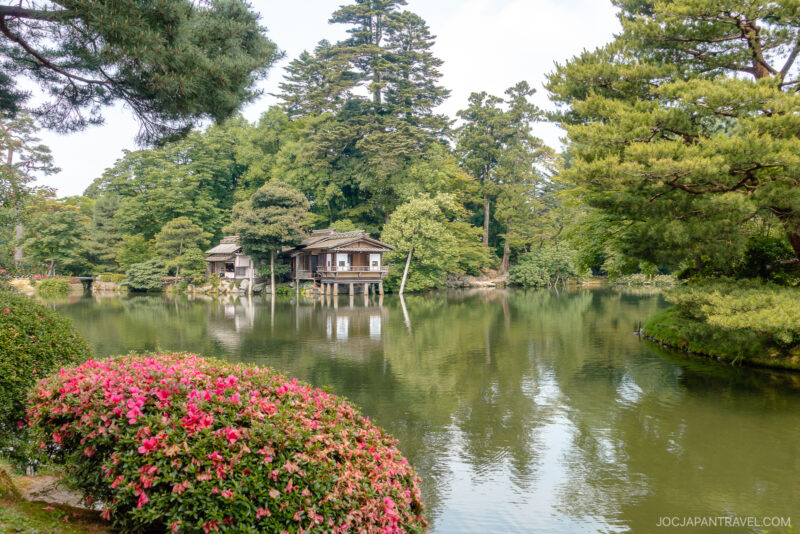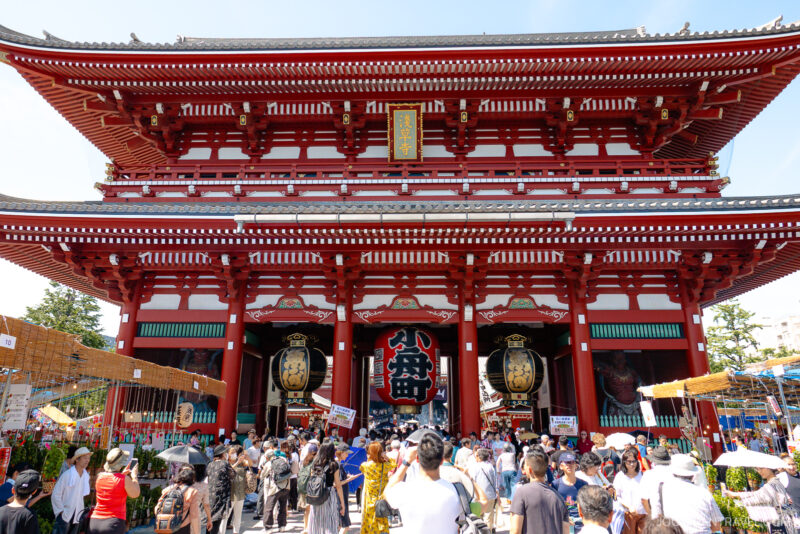This post may contain affiliate links. Please read our disclosure policy.
Myoryu-ji looks like a peaceful Buddhist temple but is actually a cleverly disguised fortress packed with trapdoors, secret stairs, and architectural tricks.
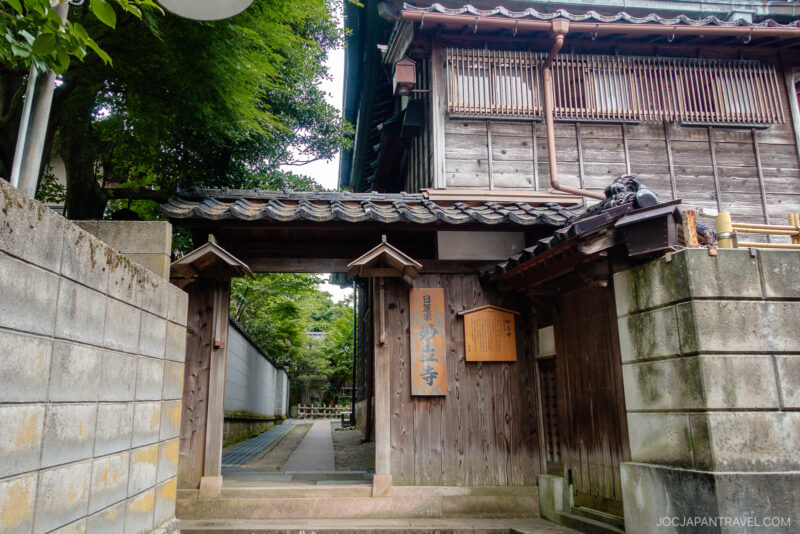
A Temple Built to Deceive
Tucked inside Kanazawa’s quiet Teramachi (寺町) Temple District, Myoryu-ji Temple—nicknamed Ninja Dera—looks unassuming from the outside. But once we stepped through the entrance, it became clear this was no ordinary place of worship.
Built in 1585 by Lord Maeda Toshiie, the temple was a strategic outpost designed to protect Kanazawa Castle. Since the Tokugawa shogunate prohibited regional lords from building fortresses, the Maeda clan disguised their defense headquarters as a multi-story temple.
Even though no real ninjas lived here, the name “Ninja Temple” stuck. Once we joined the guided tour, and it’s easy to see why.
Hidden Passages and Clever Traps
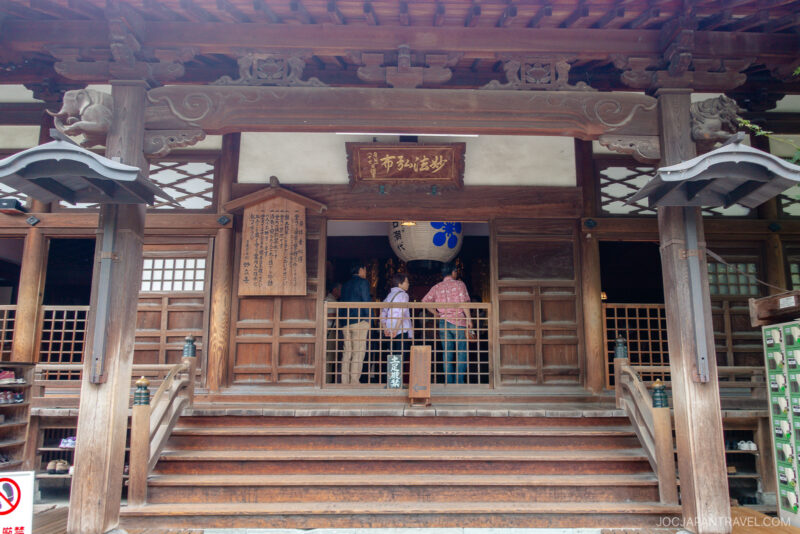
Everything about Myoryu-ji was designed to confuse enemies and protect its occupants. Inside, we found:
- False staircases meant to disorient intruders
- Hidden escape routes that lead to secret tunnels
- Trapdoors built into the floors
- Viewing windows to monitor entry points
- Optical tricks that make rooms appear smaller or flatter than they are
The craftsmanship was astonishing. What looked like a simple hallway often led to a second level or concealed space. The guide’s demonstrations of hidden floors and fake ceilings were so fascinating, especially for the kids.
Our Family’s Experience
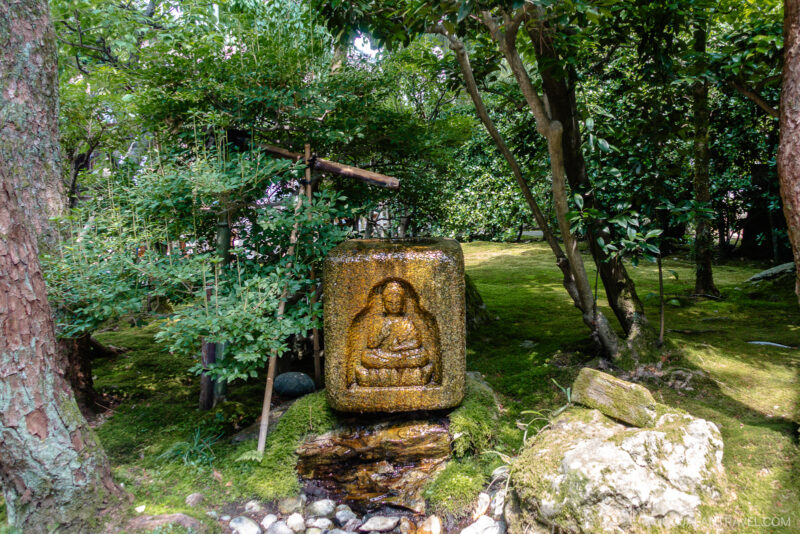
Our visit to Myoryu-ji Temple turned out to be one of the most unusual experiences of our time in Kanazawa. When we arrived, there was no reception area or ticket booth. Instead, we had to walk around the left side of the building and press a small white intercom to announce our arrival.
Once we were buzzed in, we removed our shoes and paid the admission fee—cash only. If you’re traveling with children, be aware that they asked us three separate times to confirm our kids were elementary school age. We were asked to bring their passports during the phone reservation, again at the intercom, and verified once more when buying tickets.
Photography is not allowed inside the temple, and they explicitly told us that Nami was not allowed to translate what the guide was saying for the family, which felt a bit odd. The tour is conducted in Japanese only, but English speakers are given a binder with explanations of each feature.
Each tour group is split into smaller clusters so that everyone can access the narrower stairways and secret rooms. Some areas are very tight, so we appreciated the pacing.
Despite all the quirks, our kids had a great time. It was fascinating to see how the temple’s complex design served a defensive purpose during the Edo period. The hidden stairs, trapdoors, and secret passages really made it feel like we had stepped into a historical mystery.
Visiting Tips
Tours are reservation-only and must be made by phone. You’ll need to provide your name, group size, and ages. Walk-ins are almost never accepted.
The temple is compact, but full of surprises, so tours are guided and timed. Expect to spend about 40–50 minutes inside.
How to Get to Myoryu-ji Temple
Bus
- Take the Kanazawa Loop Bus. For the LL (Left Loop), get off at LL5 Hirokoji. For the RL (Right Loop), get off at RL12.
- It’s about a 5-minute walk from either stop to the temple.
Taxi
- About 10–15 minutes from Kanazawa Station. Fares typically range from ¥1,500–¥2,000.
Pro Tip: Reservations are required and must be made by phone. Ask a Japanese speaker to call if possible.
Is Myoryu-ji Temple Worth Visiting?
Yes! Especially if you’re looking for something off the beaten path. Myoryu-ji offers a rare peek into feudal Japan’s secretive defense strategies. It’s not flashy, but the surprises hidden within its walls kept us fascinated the entire time.
The quirkiness of the temple didn’t stop us from enjoying it, and our kids couldn’t stop talking about the hidden doors and trapstairs. It’s one of the most unique places we’ve visited in Kanazawa.
More to Explore Nearby
After uncovering the hidden passages and clever defenses of Ninja-dera, explore more of Kanazawa’s lesser-known and historical gems nearby:
- Nagamachi Samurai District – Stroll past earthen walls and visit preserved samurai homes in this quiet, atmospheric neighborhood.
- Oyama Shrine – Known for its unique Dutch-influenced gate and peaceful gardens, this shrine honors a powerful feudal lord.
- Nishi Chaya District – A more local and less crowded geisha quarter offering a look into Kanazawa’s performing arts history.
- Hyakurakusou – Yuwaku Onsen – Take a short trip into the hills to enjoy Kanazawa’s serene onsen village.


